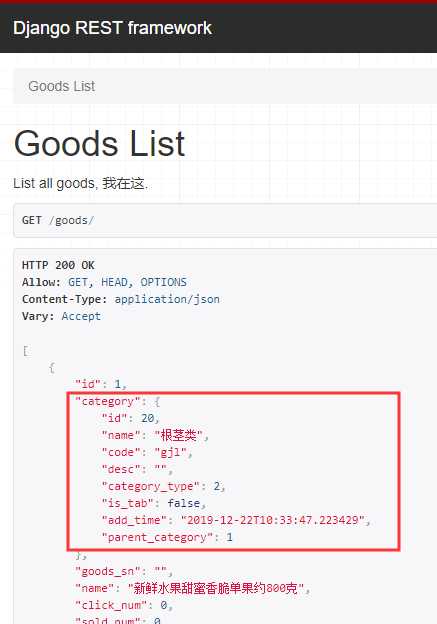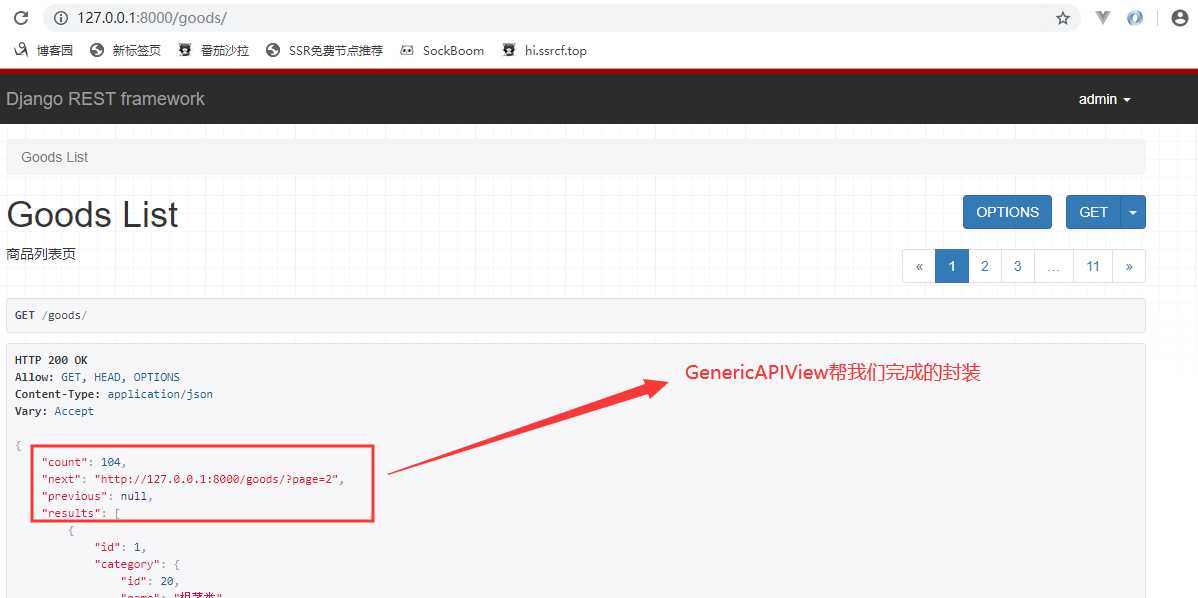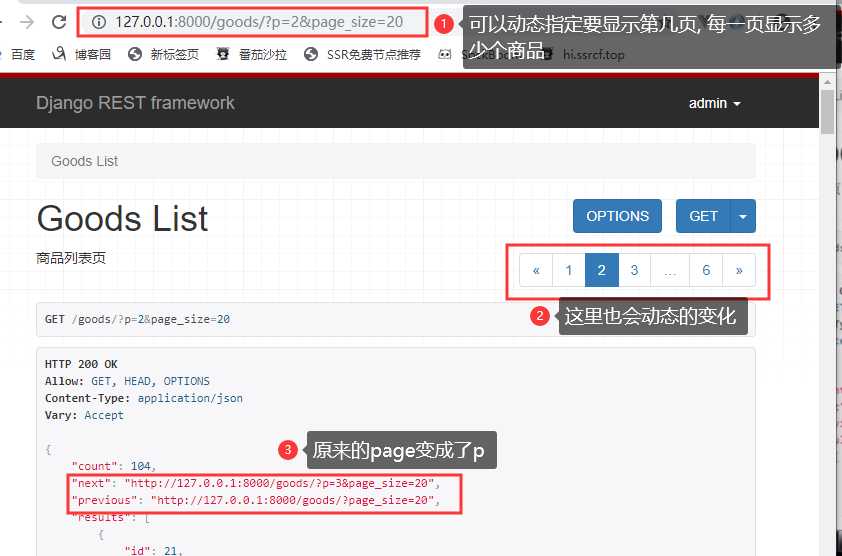(生鲜项目)08. ModelSerializer 实现商品列表页, 使用Mixin来实现返回, 以及更加方便的ListAPIView, 以及分页的设置
2021-01-22 05:12
标签:字段 ret code 多少 使用 price settings snippet 自定义分页 第一步: 学会使用ModelSerializer, 并且会使用ModelSerializer相互嵌套功能 1. goods.serializers.py 2 . 刷新网页看看结果 第二步: 使用Mixin来实现返回 goods.views.py 第三步: 分页的设置 方法一: 在settings里面设置REST_FRAMEWORK分页参数 settings.py 接着去刷新网页 还有下面这个img字段的url的拼接, 也是genericAPIView帮我们完成的 方法二: 在goods.view里面重写PageNumberPagination, 从而达到动态分页的目的, 这样前端就想怎么取就怎么取 goods.view.py 刷新网页试试 ------ over ------ (生鲜项目)08. ModelSerializer 实现商品列表页, 使用Mixin来实现返回, 以及更加方便的ListAPIView, 以及分页的设置 标签:字段 ret code 多少 使用 price settings snippet 自定义分页 原文地址:https://www.cnblogs.com/jiangzongyou/p/12088647.htmlfrom rest_framework import serializers
from goods.models import Goods, GoodsCategory
# 让goods的category字段全量显示
class CategorySerializer(serializers.ModelSerializer):
class Meta:
model = GoodsCategory
fields = "__all__" # 取所有字段
# 方式一
# class GoodsSerializer(serializers.Serializer):
# name = serializers.CharField(required=True, max_length=100)
# click_num = serializers.IntegerField(default=0)
# goods_front_image=serializers.ImageField()
# 方式二: 用ModelSerializer
class GoodsSerializer(serializers.ModelSerializer):
category = CategorySerializer() # 重写category字段,从而实现ModelSerializer的嵌套
class Meta:
model = Goods
# fields = ("name", "click_num", "market_price", "add_time")
fields = "__all__" # 取所有字段

from rest_framework import mixins
from rest_framework import generics
from rest_framework.views import APIView
from rest_framework.response import Response
from .models import Goods
from .serializers import GoodsSerializer
# # 方式一, APIview继承了View
# class GoodsListView(APIView):
# """
# List all snippets, or create a new snippet.
# """
#
# def get(self, request, format=None):
# goods = Goods.objects.all()[:10]
# goods_serializer = GoodsSerializer(goods, many=True) # many:是否是querrySet对象
# return Response(goods_serializer.data)
# # 方式二: 利用mixins.ListModelMixin, generics.GenericAPIView
# class GoodsListView(mixins.ListModelMixin, generics.GenericAPIView):
# """
# 商品列表页
# """
# queryset = Goods.objects.all()[:10]
# serializer_class = GoodsSerializer
#
# def get(self, request, *args, **kwargs):
# return self.list(request, *args, **kwargs)
# # 方式三,使用更加简便的generics.ListAPIView
# # 原理就是: ListAPIView里面继承了mixins.ListModelMixin, generics.GenericAPIView, 而且还封装了返回
class GoodsListView(generics.ListAPIView):
"""
商品列表页
"""
queryset = Goods.objects.all()
serializer_class = GoodsSerializer
REST_FRAMEWORK = {
# 解决 1.11.3版本下使用APIview会报‘CSRFCheck‘ object has no attribute ‘process_request‘的问题
# "DEFAULT_AUTHENTICATION_CLASSES": [],
‘DEFAULT_PAGINATION_CLASS‘: ‘rest_framework.pagination.PageNumberPagination‘,
‘PAGE_SIZE‘: 10,
}


from rest_framework import mixins
from rest_framework import generics
from rest_framework.views import APIView
from rest_framework.response import Response
from rest_framework.pagination import PageNumberPagination # 自定义分页
from .models import Goods
from .serializers import GoodsSerializer
# 自定义分页功能, 并实现动态分页, 继承PageNumberPagination
class GoodsPagination(PageNumberPagination):
page_size = 10
page_size_query_param = ‘page_size‘ # 指定每一页显示多少条
page_query_param = "p" # 指定要第几页
max_page_size = 100
class GoodsListView(generics.ListAPIView):
"""
商品列表页
"""
queryset = Goods.objects.all()
serializer_class = GoodsSerializer
pagination_class = GoodsPagination # 需要指定分页的类

文章标题:(生鲜项目)08. ModelSerializer 实现商品列表页, 使用Mixin来实现返回, 以及更加方便的ListAPIView, 以及分页的设置
文章链接:http://soscw.com/index.php/essay/45295.html